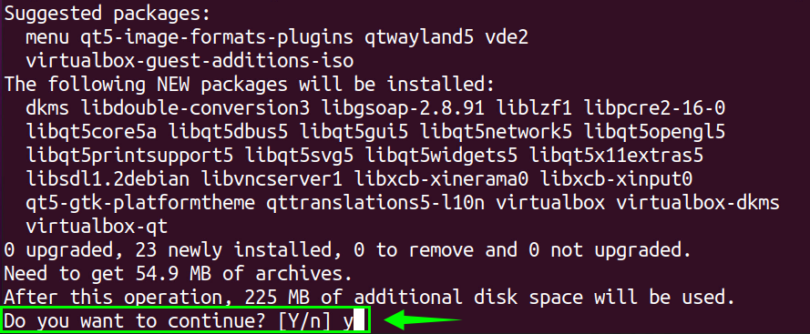


The VirtualBox guest additions consist of a set of drivers and kernel modules for the operating system, when installed as a VirtualBox virtual machine. The reason for this is that the Ubuntu 22.04 installer does not install the so called VirtualBox guest additions. For example after resizing the virtual machine window or going into full-screen mode. In you ever installed Ubuntu in a VirtualBox virtual machine, you probably noticed that you can’t change the screen resolution. This article explains how to install the VirtualBox guest additions in an Ubuntu 22.04 virtual machine. Besides automatically adjusting the screen resolution, you also get support for a bi-directional clipboard and shared folders. Run the apt update command below to update the list of available packages.Bummed that you can’t change the screen resolution in your freshly installed Ubuntu virtual machine? An easy fix exists for this: You just need to install the VirtualBox guest additions in your Ubuntu 22.04 VirtualBox virtual machine. To install VirtualBox from the Ubuntu repositories using APT:ġ. You can install the latest version using Oracle’s official repository, which you will learn about in the following section. Note that the version of VirtualBox in the repositories may not be the latest and greatest. This method works whether you’re using Ubuntu Desktop or Server. The easiest way to install VirtualBox on Ubuntu is to use the APT package manager. The base repositories for Ubuntu 20.04 include VirtualBox, but it doesn’t come installed by default. Installing VirtualBox on Ubuntu 20.04 via APT An OS image file (ISO) – This tutorial uses an ISO image of Windows 10 (32-bit).In real-world usage, the amount of memory and storage you need will depend on how many VMs you create and what you plan to do with them.

A minimum of 20GB of free storage space – Each VM you create needs its own storage.A minimum of 4GB of RAM – VirtualBox recommends at least 16GB for optimal performance.Related: How to Set up the SSH Chrome Extension An SSH client of your choice – This tutorial assumes that you’ve logged/SSH’d into your Ubuntu 20.04 system.If you use a non-root user, prepend sudo on each command in this tutorial. A user account with sudo privileges – This tutorial uses a root account, but you can also use a regular account with sudo privileges.If you’d like to follow along, be sure you have the following: This tutorial will be a hands-on demonstration. Increasing VM’s Video Memory (VRAM) to Improve Performance.Installing VirtualBox from Oracle’s Official Repository.Installing VirtualBox on Ubuntu 20.04 via APT.


 0 kommentar(er)
0 kommentar(er)
